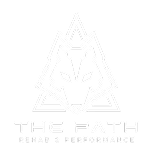Should You Be Concerned About Overtraining Syndrome?

Are you currently training for a specific event, or plan to in the future? No matter what your training goals are, every athlete goes through phases of training called periodization. Training periodization is a concept that deals with dividing the training process into specific phases. These phases are classified by amounts of time: macro (annual), meso (weeks to months), and mico (workouts, days, weekly).1 There are multiple types of periodization, and the type that each athlete uses depends on several different factors such as sport demands, style of training, different coaching styles, etc. A person following a training program will manipulate the variables within these phases (sets, repetitions, load) to bring about the specific adaptations desired within that particular period.2
No matter which type of periodization you use, each training period reaches some form of “peaking point” during the cycle. Simply put, a peak is achieved when you “overreach.” Overreaching is considered an accumulation of training load that leads to performance decrements requiring days to weeks for recovery.2 Overreaching followed by appropriate rest can ultimately lead to performance increases, referred to as functional overreaching. However long-term overreaching, referred to as non-functional overreaching, combined with additional stressors can result in overtraining syndrome (OTS).3 Prolonged periods of the imbalance between fatigue and recovery may eventually lead to extended periods of performance impairment, and this is when non-functional overreaching progresses into OTS.4
What is overtraining syndrome? OTS is defined by persistent underperformance despite >2 months of recovery, joined with changes in mood and absence of symptoms/diagnosis of other possible causes of underperformance. OTS has been attributed to both central (psychological, neurological) and peripheral (intramuscular) mechanisms.4 There have been various hypotheses that have been proposed for the cause of OTS (glycogen hypothesis, central fatigue hypothesis, glutamine hypothesis, oxidative stress hypothesis, autonomic nervous system hypothesis, hypothalamic hypothesis, and cytokine hypothesis), however none have been proven at this time.3
If you are at all concerned that you or someone you know is at increased risk of developing OTS, please lookout for these common symptoms. Parasympathetic alterations are more common in aerobic sports, and sympathetic alterations are more common in anaerobic sports.2
OTS may have destructive and overwhelming effects on an athlete's career, which is why prevention is of the utmost importance. However, despite utilizing prevention measures, it is still possible for an athlete to develop OTS. Given the unusual nature of inducing OTS in athletes and uncertain pathogenesis, there are no evidence-based means of preventing OTS.3 To our best knowledge, preventing OTS includes mindful planning of training programs with regular monitoring by coaches and the athletes to assess adaptation to training. More specifically, preventing OTS includes: minimizing abrupt increases in training loads, monitoring dietary intake, monitoring frequency of competition, individualizing and periodizing training plans, as well as allowing adequate post-exercise recovery and rest days into the training/competition program.5
Treatment protocol for an individual diagnosed with OTS is still unclear. Other than providing adequate rest, there is no effective pharmacological treatment to counteract OTS and accelerate recovery. However, antioxidants and anti-inflammatory compounds may show promise in neutralizing the elevated oxidative stress and chronic inflammation in muscles of athletes with OTS.5
If you or someone you know is currently struggling with training, do not be afraid to speak up. At the end of the day, it is the athlete’s responsibility to recognize signs and symptoms and set healthy boundaries with training. If you are dealing with any of the symptoms mentioned above, this puts you at a significantly greater risk for other musculoskeletal injuries. If you are currently dealing with burnout or feel like you are at risk for overtraining, please reach out to a medical professional.
- Boly, J. (2019, April 12). The 3 Most Common Types of Training Periodization (and When to Use Them). BarBend.https://barbend.com/3-most-common-types-periodization-when-to-use-them/
- Lorenz D, Morrison S. CURRENT CONCEPTS IN PERIODIZATION OF STRENGTH AND CONDITIONING FOR THE SPORTS PHYSICAL THERAPIST. Int J Sports Phys Ther. 2015;10(6):734-747.
- Kreher JB, Schwartz JB. Overtraining syndrome: a practical guide. Sports Health. 2012;4(2):128-138. doi:10.1177/1941738111434406
- Meeusen R, Duclos M, Gleeson M, et al. Prevention, diagnosis and treatment of the overtraining syndrome: ECSS Position Statement Task Force. Eur J Sport Sci. 2006;6(1):1-14
- Intramuscular mechanisms of overtraining. (2020, August 1). ScienceDirect. https://www.sciencedirect.com/science/article/pii/S2213231720300835
Dr. Samantha Benavides
PT, DPT
Co-Owner
The PATH Rehab & Performance
Sign up for our newsletter
Join our community and receive exclusive physical therapy insights, training strategies, and recovery techniques tailored for active people.
